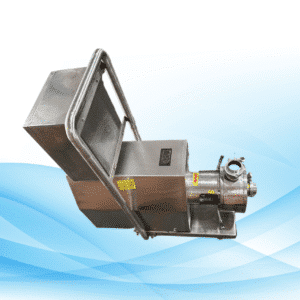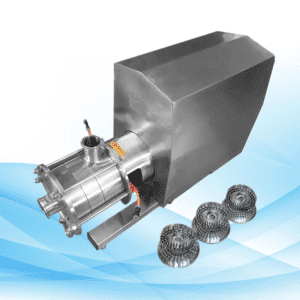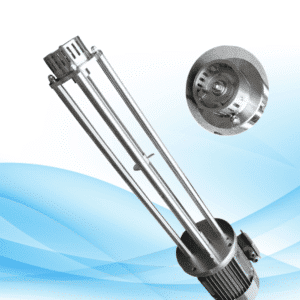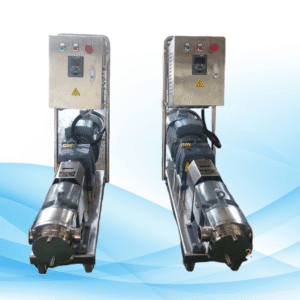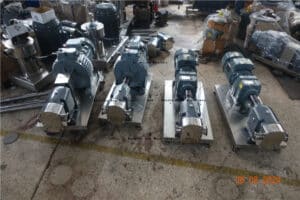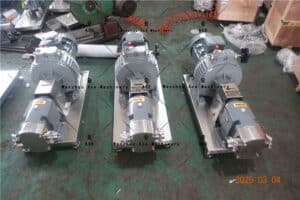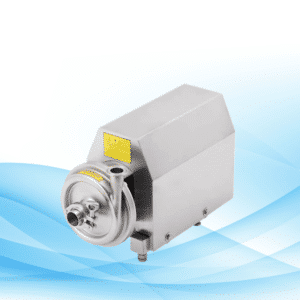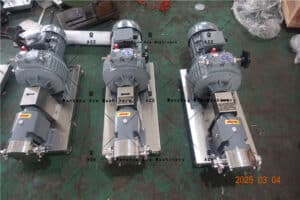There are innumerable types of pumps which perform specific functions, out of these we have a lesser known, yet very useful and efficient, positive displacement pump. This pump is the most utilized pump among all the industries, from petroleum and gas industries, to pharmaceutical companies as well to food factories. One thing is certain; understanding a positive displacement pump, its operation and advantages can help answer the basic problem of which pump will work best in the place of application. This blog post focuses on the functioning principles of positive displacement pumps and its applications in various industries.
What is positive displacement pump
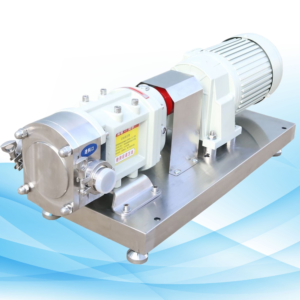
A positive displacement pump is one that employs a process where a defined volume of fluid is captured and moved by employing some energy source, and that fluid is then pushed through some discharge tubing. Generally, centrifugal pumps suck out fluids, and hence the high rate of rotation, while positive displacement pumps are able to supply constant volume fluid irrespective of the opposing pressure. This makes them suitable for high-pressure applications or where thick fluids of high viscosity are to be pumped.
The Positive displacement pumps are classified into two types of pumps, which includes rotary pumps and reciprocating pumps. Different methods are employed in these types with an unvarying end product as with the set flow at the same rate.
How Does a Positive Displacement Pump Work?
A positive displacement pump is defined as a machine, which displaces volumes of liquid from the inlet to the outlet port of the pump. In practice, it means that fluid is drawn into the pump by way of making cavities, and this action is called fluid retention. Currently, the average water intake pressure at the chamber involves the internal pinching of the liquids.
In rotary pumps, such structures get turned by gears which move a geometric structure to grab the moving water. And such elements are in rapid rotation, thus the constant flow of liquid is maintained. In contrast, reciprocating pumps work using a piston, or a diaphragm that allows any fluid to be displaced in an oscillating motion.
Working Process
The process can be construed as follows:
- Intake: The pump generates a suction within the cavity, thus, liquid goes in.
- Trapping the Fluid: After going in, the moving fluid is trapped within the chamber by additional moving parts or by the above explained piston working.
- Displacement: This trapped fluid is then pushed forward out through the discharge pipe by the pump by reduction of the volume of the chamber that contains the fluid.
This cyclical or continuous process makes positive displacement pumps ideal for situations in which a controlled volume of fluid has to be delivered within a specified time.
Types of Positive Displacement Pumps
These days, there are different kinds of positive displacement pumps which include:
Gear Pumps
The nearly parallel shapes cut a path through the pumping glands and comprise a number of pin-like protrusions or fluid trappings that capture liquid between opposing teeth positions. Such pumps are often employed where there is a high demand for precision in the amount of supplied fluid, e.g. in systems for circulating oils.
Lobe Pumps

Operate axial-flow lobe pumps consist of 2 lobed rotors which operate in a very small clearance to handle fluid transfer. The rotors here only transfer fluid from the inlet to the outlet with a little to no contact, these pumps are also used in sanitary applications such as food and beverage processing.
Diaphragm Pumps
They use a flexible diaphragm to create alternating vacuum and pressure to move a fluid. They are widely used in chemical processing and wastewater treatment as they have the ability to pump corrosive fluids.
Peristaltic Pumps
In this type of pump, a flexible tube is constricted by rollers or shoes in order to propel a fluid inside it. This pump is especially beneficial in medical usage since it prevents any fluid from contamination as the fluid comes into contact only with the tubing.
Piston Pumps
In these types of pumps, the piston is used as an element to move a quantity of fluid from one position to the next by going forward and backward inside a cylinder. Piston pumps are known to have high pressure generation capabilities, and therefore they can be found in porous media hydraulic systems.
Benefits of Positive Displacement Pumps
Positive displacement pumps have a number of advantages, which are the reasons as to why they are solicited in most sectors. To be particular, mentions of these advantages include:
- Constant Flow Rate: One of the major positive aspects of positive displacement pumps is that they can maintain a constant flow rate over a range of discharge pressure. This ability is valuable in quite a number of processes, including dispensing or metering of some fluids.
- Capable of Withstanding High Pressures: The only drawback of positive displacement pumps is the generation of pressure of a positive displacement pump it can be in excess of 4000 psi, which is why they are used to applications that involve pushing fluids through a long distance or through considerable pressure.
- Handling Viscous Fluids: Unlike centrifugal pumps, which are inefficient in moving thick or viscous fluids, positive displacement pumps are designed to pump highly viscous or thick liquids efficiently. This makes them suitable for pumping oils, syrups, slurries, among other applications.
- Self Priming: A majority of positive displacement pumps self prime, and hence one is able to begin pumping without priming the pump manually. This feature is essential in areas where reliability and convenience in the pump’s operation is required.
- Energy Efficiency: These pumps also tend to be more efficient as compared to centrifugal pumps when operated in a high viscous fluid or high pressure systems, hence the high efficiency. There is a potential of saving expenses over the long haul as less energy is consumed in operating the pumps.
Use of Positive Displacement Pumps
The very nature of positive displacement pumps allows them to be applied in many industrial activities, thus their repeated use across many industries. Some of the places of use include the following:
- Oil and Gas: positive displacement pumps are applied for transferring crude oil, lubricants, oils, and other petroleum products or thick fluids or under high pressure as is common in oil and gas operations.
- Food and Beverages: Even in food and beverage industry that requires sanitary conditions for pumping viscous materials like sauces, syrup, dairy products. Pumping sanitary liners, lobe pumps are used.
- Pharmaceuticals: Positive displacement pumps are excellent tools in pharmaceutical manufacturing for dosing and dispensing sensitive or sterile liquids without allowing contamination during the process.
- Chemical Processing: Diaphragm and piston pumps are the most used types of pump house equipment in plants moving aggressive or corrosive liquids.
- Wastewater Treatment: Among the various categories of positive displacement pumps, Diaphragm pumps have made remarkable inroads into wastewater management by rapidly pumping thick adhesives and slurries.
Common Applications of Positive Displacement Pumps and Centrifugal Pumps
You might be thinking all the same, “what’s the necessity of this positive displacement pump if there is a centrifugal pump?” The answer is simply based on the characteristics of the application. Here are a few highlights to note:
- Consistency In Flow Rate: Positive displacement pumps is practically all pressure in the cylinder produces an almost constant flow, therefore irrespective of any changes in pressure the flow rate remains unchanged, while centrifugal pumps flow rates of the system revolve depending on the systems pressure.
- Pressure: Positive displacement is preferable when the system operates under high pressure, while centrifugal pumps have increasing losses in efficiency with increasing pressure.
- Fluid Viscosity: Positive displacement pumps are best employed in the pumping of thick liquids, as centrifugal pumps are inefficient when pumping very viscous fluids.
Conclusions
Many systems rely on positive displacement pumps because they guarantee a consistent rate of flow throughout varying levels of pressure and allow for the pumping of high viscosity liquids. In any project that requires moving oils, chemicals, foodstuff or even wastewater, it is most likely that one will find a positive displacement pump suitable for the work. Knowing how the pumps operate, what the different types are, and what their many uses are will prepare you well to select the best pump for your needs.
When choosing a pump, consider fluid viscosity, fluids’ pressure requirements and flow rates. In most difficult pumping applications, positive displacement pumps will provide adequate and proper energy solutions, making them a necessity in industrial and commercial uses.

